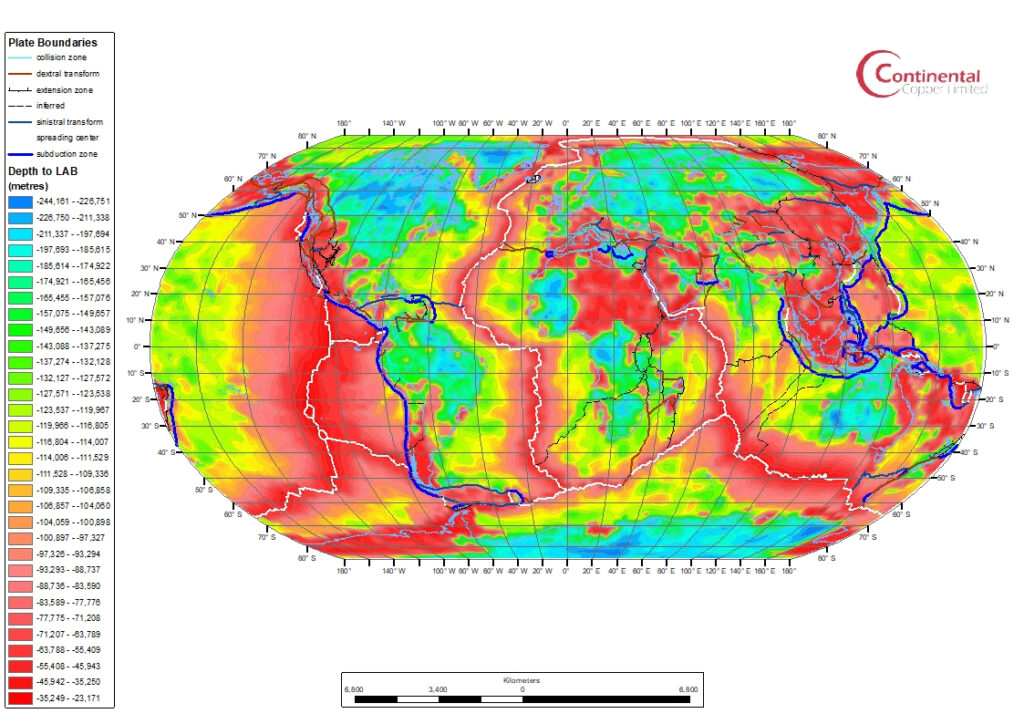Introduction

The Earth’s lithosphere is its rigid outer shell, which rests on the more fluid asthenosphere. The thickness of the lithosphere varies, from a few kilometers at ocean spreading centers to 250-300 kilometers within continental cratons. There are two significant seismic boundaries in the crust and upper mantle: the Mohorovicic Discontinuity (Moho), indicating a change from felsic-to-mafic rocks to ultramafic peridotites, and the Lithosphere-Asthenosphere Boundary (LAB), which signifies a shift from a strong, plate-like layer to a weaker, convective asthenosphere over geological time. This transition occurs around the conductive-adiabatic geotherm intersection, where heat transfer shifts from conduction to convection.
The thickness of the continental lithosphere depends on its tectono-thermal age, increasing from 60-80 kilometers in active extensional regions to 100-160 kilometers in older terranes and up to 200-300 kilometers in ancient cratons. Some exceptions exist in cratons affected by more recent tectonic and magmatic events. The lithosphere appears as a seismic high-wavespeed layer, or “lid,” over a low-wavespeed zone or a gradual decrease in seismic wavespeed with depth. This boundary is referred to as the “8°-discontinuity” or the mid-lithosphere discontinuity (MLD). Different seismic methods may detect different depths for the LAB or MLD, depending on their sensitivity.
The cratonic LAB is subject to debate, with some proposing a broad thermal boundary zone and others suggesting a sharper transition influenced by factors such as chemical composition, melt content, or vertical anisotropy variation. The presence of an observable S-to-P (Sp) conversion in seismic data requires a thermal gradient of at least 20°C per kilometer. While such gradients are common beneath oceanic and non-cratonic areas, cratons typically exhibit much lower gradients. Multiple factors, including various scales of mantle convection, can contribute to localized high thermal gradients at the LAB.
Continue reading A new Lithospheric and Tectonic Model for Earth